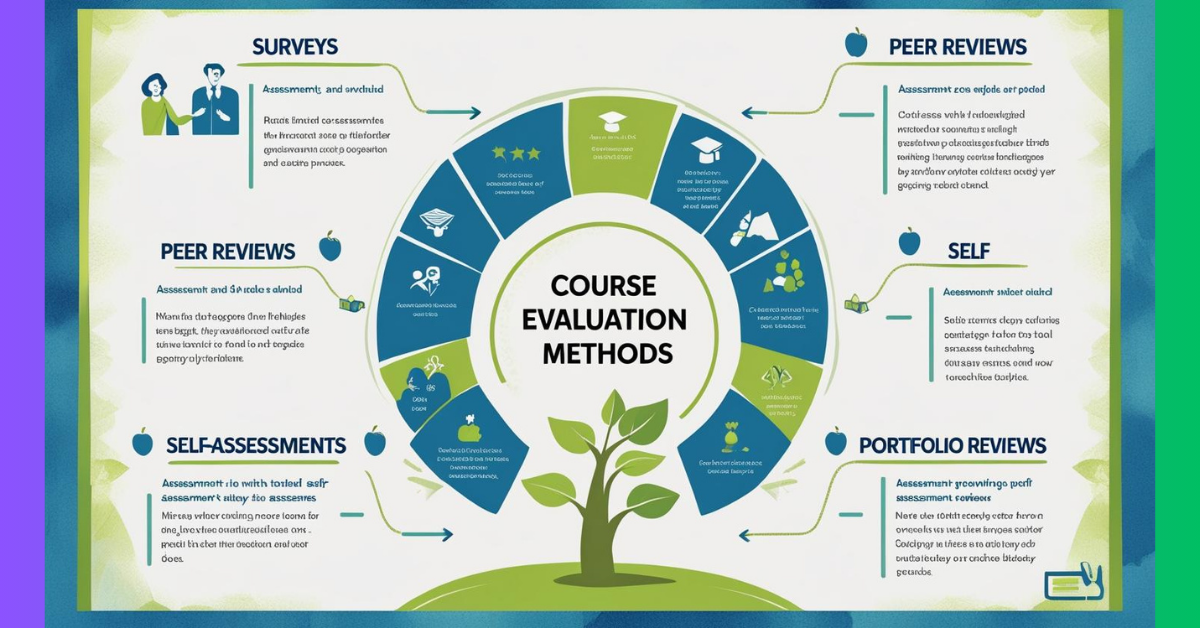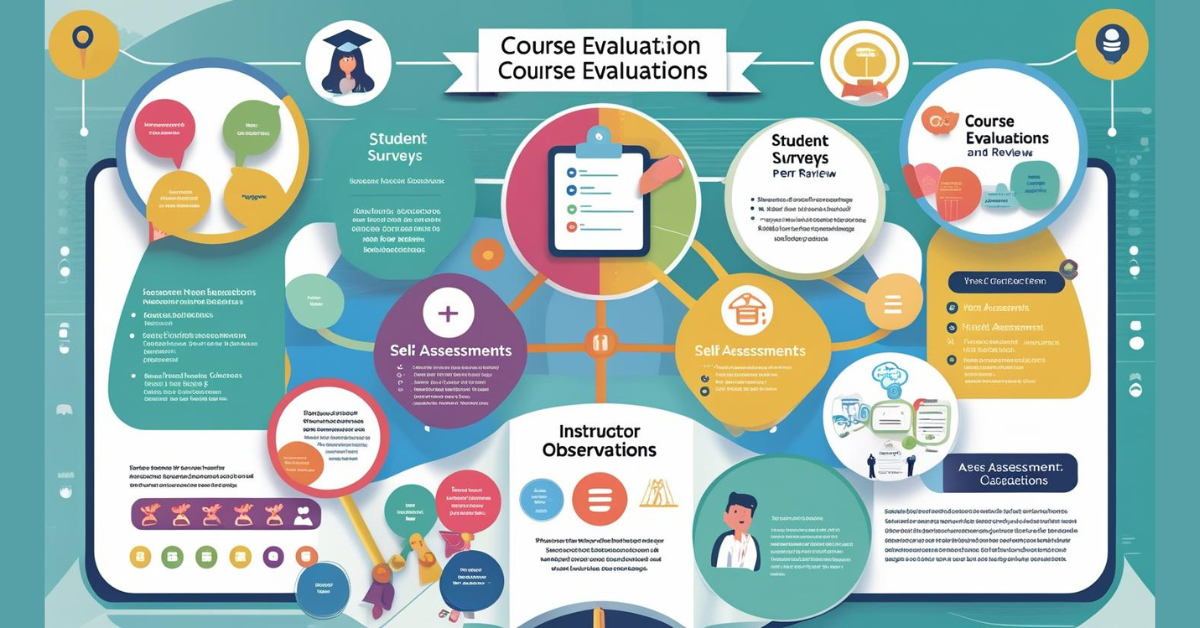Many Assessment And Evaluation Strategies for Methods of Course Evaluation are used in nursing Academic for different levels of programs. These strategies are very specific to evaluation.
Methods of Course Evaluation: Assessment And Evaluation Strategies
Methods of evaluation can include written assessments, such as examinations, papers, literature critiques, and reflective journaling. Observations by student peers and faculty in the college laboratory and clinical setting are assessments that provide direct evaluation of student cognitive, affective, and psychomotor application of knowledge and skills. Assessment rubrics or rating scales for evaluating student achievement foster objectivity, alert the student to the level of course/faculty expectations, and focus on student learning as Assessment And Evaluation Strategies.
Examinations, Test Development, Types of Questions, and Examples:
Testing can include a range of multiple-choice, true-false, short answer, and essay items on a written examination; observation; self-evaluation; and peer evaluation. There are books and Internet resources dedicated to test development. The National Council of State Boards of Nursing (2006) provides e-learning resources, including assessment strategies and a test construction course available for faculty. Books and other Internet resources dedicated to test development are available for Assessment And Evaluation Strategies.
Development of a test blueprint that is like a course outcome blueprint fosters measurement of all unit objectives. A test blueprint lists the unit or topical outline directly related to the course outcomes in the left column and the levels of Bloom’s revised taxonomy across the header row. For each component of the unit outline, determine the level of knowledge, such as comprehension or application, related professional values, and psychomotor skills that the student needs to function effectively at this level of nursing.
If there are several units in a course, develop a blueprint for each unit that shows major content areas, number of test questions per content area, and the thinking level required, as reflected by the revised Bloom’s taxonomy. Evaluation measurements, including test questions for courses at the end of the nursing program, require that students analyze information and evaluate possible solutions for the best alternative. Case situations in the test items can require varying levels of analysis and weighing of alternative solutions, which is reflective of a skill needed for nursing practice in Assessment And Evaluation Strategies.
Multiple-Choice Testing As Assessment And Evaluation Strategies
Testing with multiple-choice questions is the most common evaluation method for measuring student attainment of didactic knowledge. Many nursing textbooks now come with a test bank in the faculty resources accompanying the textbook. Because of differences in curriculum and courses across programs, the faculty reviews items in the test bank and select those most applicable to major content areas for the respective course. It is likely that not all test items in a test bank will be usable for a course, unless a course has been designed around a textbook.
Multiple-choice test questions can measure different levels of learning, including a range of how well students remember concepts and the ability to apply concepts, for example, concepts of nursing care with outcome criteria and evaluative measures. When developing a test question, ask about one idea in the stem of the question and avoid negative wording when possible. If words like “not” are used, underline them.
If there are a series of multiple-choice questions that relate to the same situation, keep all of the questions in the series on the same page or screen as the situation; if this is not possible, repeat the situation on the new page.
In a series of questions related to the same situation, the responses to one question should be independent of responses to other questions. In other words, the student should not need to go back to an earlier question, in order to respond to the current question. There should be three to five possible answers to each multiple-choice question. Using three options for multiple-choice questions may decrease item difficulty as well as increase reliability and discrimination when detractors are removed.
Placement of the correct answer for each question should vary at random to avoid students guessing the correct answers based on a pattern. The incorrect answers should be plausible to avoid automatically eliminating a response and determining the correct answer by process of elimination. The response “all of the above” should be used cautiously, if at all; determining that at least two responses are correct would mean “all of the above” is correct, without requiring knowledge of the third response.
It may be better to have only one correct response of three response options than to use “all of the above.” Haladyna (1990) suggests development of a question structure that works well and then interchanging key information. For example, a format or question template of “what intervention is used first when caring for the client with (fill in the blank)?” can measure the student’s ability to apply interventions and could be used with all topics in which application of interventions is tested (Haladyna, Downing, & Rodriquez, 2002).Assessment And Evaluation Strategies.
True-False
True-false test questions can evaluate understanding of relationships between two concepts. For example, “The patient with cyanotic hands, lips, and toes has a lack of oxygen in the blood” can determine whether a student knows signs and symptoms of decreased blood oxygenation. Avoid reinforcing outdated information when writing questions that are false.
The question, “Reddened areas over bony celebrities should not be massaged with lotion” should be written in a manner to make the correct answer “true,” otherwise, it could reinforce an outdated and potentially harmful practice used in the clinical area, particularly by a weak student. True-false test questions are effective in measuring factual knowledge or relationships between concepts, but it is more difficult to write true-false questions that measure synthesis or evaluation.
Short Answer and Essay Questions
Short-answer questions and essay questions can test beginning to higher-level thinking, and may be easier and less time consuming for instructors to create. They can take much longer to grade objectively, however. A short-answer or essay question can determine if students remember and are able to apply concepts. An example of an essay question is, “You are a community health nurse. Create a plan to address a community outbreak of influenza.”
This question requires the student to apply concepts of health promotion and disease prevention in the community setting, and requires creating the highest level of thinking in Bloom’s revised taxonomy. Criteria for the correct response to the question should be written out and compared to the student responses when grading to increase effectiveness and objectivity.
Learning Level and Leveling Test Questions: Assessment And Evaluation Strategies
The level of testing should correlate with the expected course outcomes and course placement in a nursing program. Concepts and outcomes introduced at the beginning of a program require student understanding to progress successfully through the program, and grasp concepts at the end of a program. In a beginning nursing course, testing on fundamental principles of nursing is important.
A student may learn the concept of safety, for example, and test questions can determine my student understanding of this concept on a basic or individual level. Testing the safety concept in a later course may include a higher level question that asks the student to create a plan to address community safety issues, such as how to prevent spread from an outbreak of influenza, mumps, or a highly contagious gastrointestinal illness.
Bloom’s Taxonomy The revised Bloom’s taxonomy by Anderson and Krathwohl (2001) provides a framework for measuring cognitive (ie, thought) processes, related to levels of thought and action verbs that can be used in test questions. The original Bloom’s taxonomy identified the cognitive domain with the following six knowledge levels: recall, comprehension, application, analysis, synthesis, and evaluation (Bloom, 1956).
The revised taxonomy emphasizes the thinking levels: remembering, understanding, applying, analyzing, evaluating, and creating (Anderson & Krathwohl, 2001). Pohl (2000) provides examples of the original taxonomy compared to the revised taxonomy and sample questions that reflect levels of taxonomy. Assessment and testing throughout a nursing program should require increasing thinking ability levels as identified in the revised Bloom’s taxonomy.
There are also affective and psychomotor domains of learning. The affective domain relates to judgments and values. The psychomotor area relates to skill testing and demonstration; skill testing for an examination usually means the student demonstrates knowledge of sequenced activities or procedures in the college laboratory or clinical setting.
Following are two situations, the first of which requires understanding (revised taxonomy, second level) basic principles to prevent infection and applying (revised taxonomy, third level) this to a clinical situation. The second situation requires evaluating the situation (revised taxonomy, fifth level) and initiating action to determine cause and prevent further spread of the illness (revised taxonomy, sixth level of “creating”).
Situation 1. There are five postoperative surgical patients in your work setting. What is the best way to prevent and avoid spread of possible infection?
- Ask the nurse practitioner to order antibiotics.
- Put patients with wound drainage on strict isolation.
- Use good hand washing technique before and after caring for each patient.
- Keep the patients as far from each other as possible.
- Restrict visitors to those patients with no signs of infection.
Situation 2. A large number of students and teachers at a local school suddenly become ill with gastrointestinal symptoms of vomiting and diarrhea. They go home. As the school health nurse, what should you do next?
- Contact the housekeeping department to clean the restrooms.
- Check with the cooks about the food choices that day and suggest a lighter fare for the next day.
- Contact the parents with information on follow-up care.
- Immediately contact the public health department for follow-up on cause and infection control.
Written methods of evaluation primarily measure cognitive levels of thinking, rather than affective and psychomotor domains of learning. In the beginning nursing student, it is important for the student to understand handwashing and value the importance of handwashing to prevent the spread of infection. When the student actually takes the action of washing hands before working with clients, it shows that the student values the importance of handwashing.
It also shows that the student has cognitive knowledge of the connection of handwashing to disease prevention, and whether or not the student has the psychomotor skill to demonstrate the correct handwashing procedure. In the clinical setting, the student would automatically initiate and use the correct handwashing technique before and after caring for a client, demonstrating the level of cognitive thinking, the affective value of applying the concept, and the ability to carry out the psychomotor procedure for Assessment And Evaluation Strategies.
Read More:
https://nurseseducator.com/assessment-and-evaluation-strategies-program-assessment-and-evaluation
Social Links:
https://www.facebook.com/nurseseducator/
https://www.instagram.com/nurseseducator/



